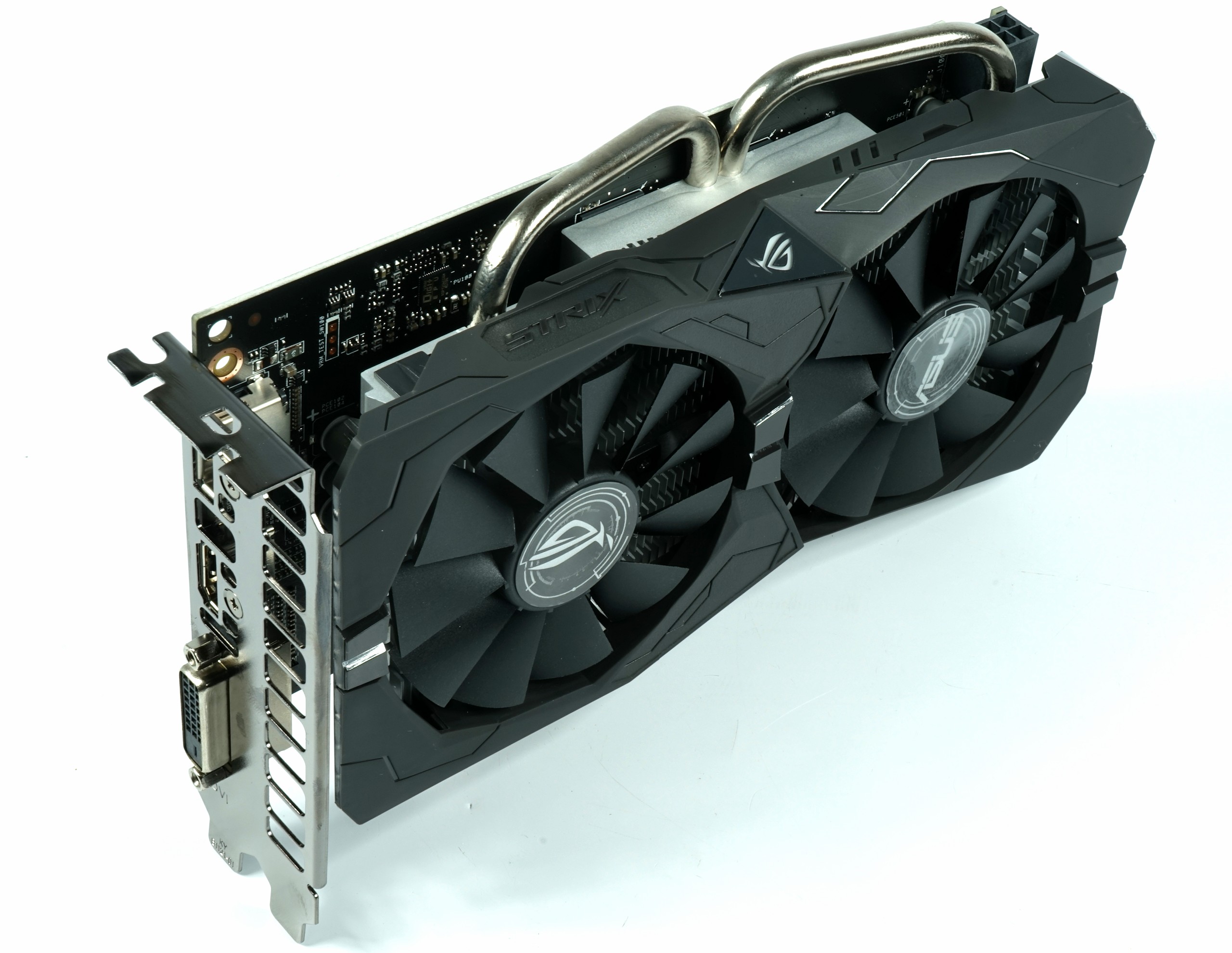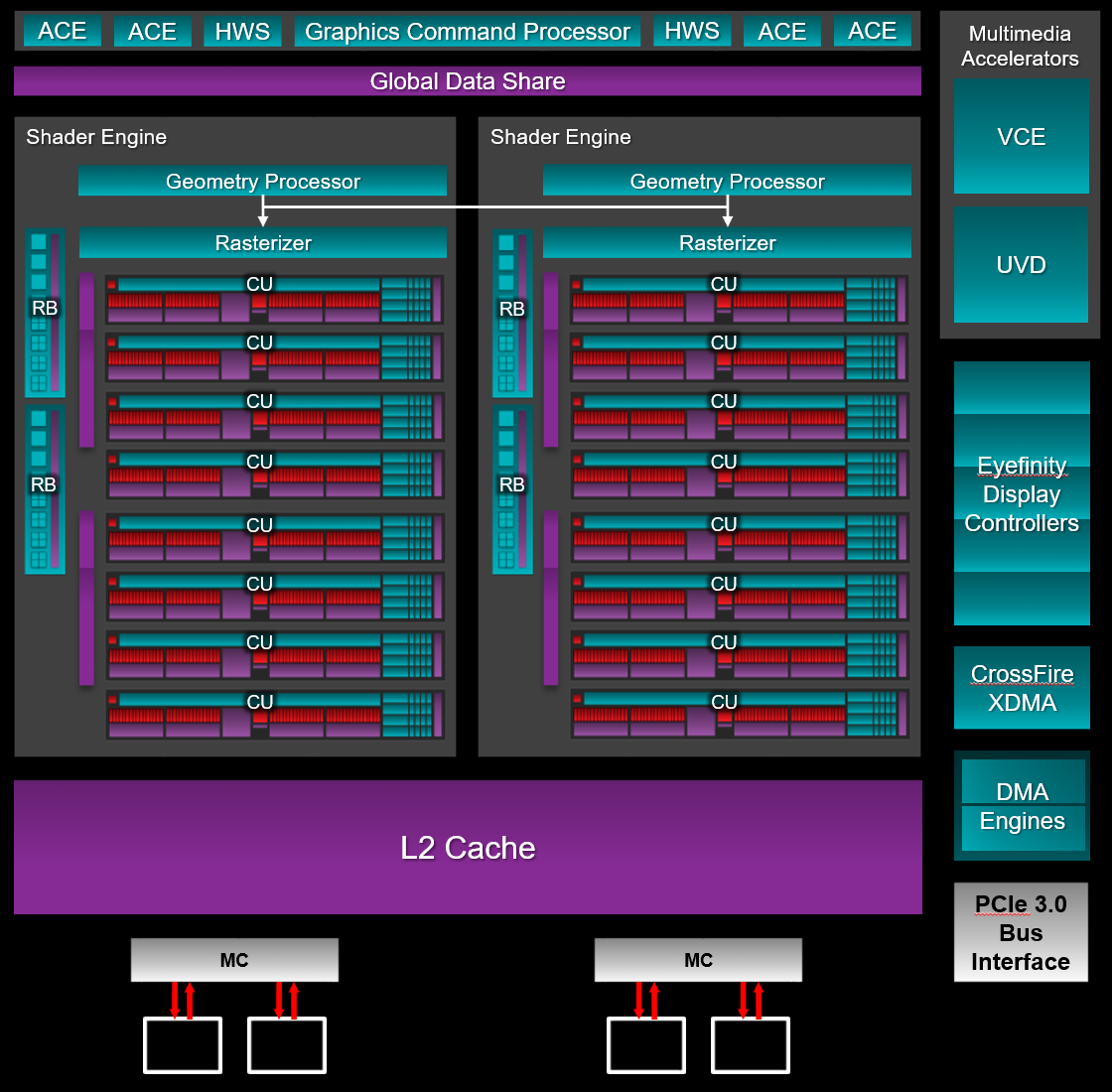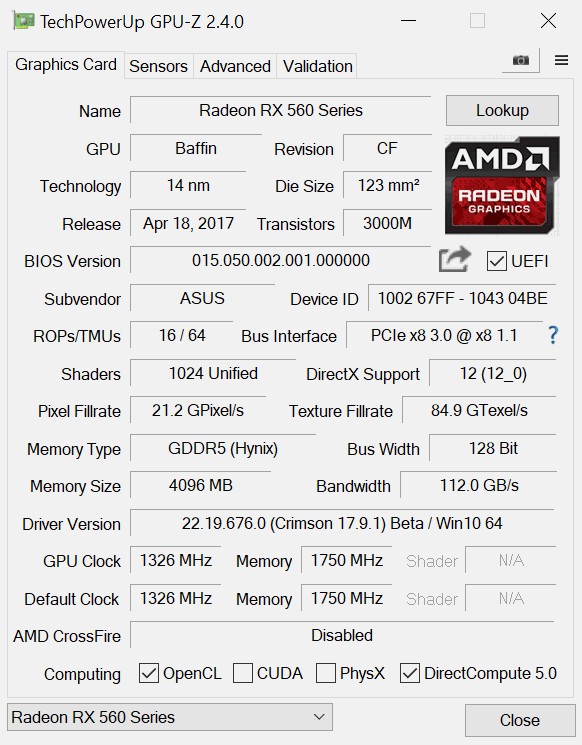Amd Radeonã¢â€žâ¢ Rx 560 With 2gb Gddr5 Graphics Memory Review
Our Verdict
Radeon RX 560 doesn't outperform its predecessor past equally much equally we expected. All the same, it's nonetheless a fairly cool, adequately quiet card that serves up small frame rates at 1920x1080 in modern games, and then long equally you're willing to dial quality back to Medium presets.
For
- Compelling 1080p performance at reduced detail settings
- Manageable heat/power consumption
- Radeon RX 560 4GB is reasonably priced if y'all discover a $120 card
Confronting
- Comparable operation from GeForce GTX 1050 in almost games
- Higher power consumption than GTX 1050
Tom'due south Hardware Verdict
Radeon RX 560 doesn't outperform its predecessor by every bit much as we expected. However, it'southward still a fairly cool, fairly repose card that serves upwards modest frame rates at 1920x1080 in mod games, so long every bit you're willing to punch quality back to Medium presets.
Pros
- +
Compelling 1080p performance at reduced detail settings
- +
Manageable heat/ability consumption
- +
Radeon RX 560 4GB is reasonably priced if you find a $120 card
Cons
- -
Comparable functioning from GeForce GTX 1050 in about games
- -
Higher ability consumption than GTX 1050
AMD Radeon RX 560 4GB: Polaris eleven Rides Again
AMD's Radeon RX 500-series refresh was a quick rush of more often than not recycled GPUs and iterative classification. Merely there were a couple of developments that made the 500-series notably more than competitive than the Radeon RX 400s before them.
For example, nosotros got a first sense of taste of Polaris 12, code-named Lexa, in our Radeon RX 550 2GB Review. That GPU was designed to fill a gap under $100 (£120) where entry-level favorites like Radeon R7 260 and 360 once lived. It, along with Nvidia'southward competing GeForce GT 1030, were welcome additions to a long-neglected segment.
Just higher up the RX 550 in its refreshed product stack, AMD unveiled a Radeon RX 560 that also piqued our interest. Last year, we identified the Radeon RX 460 as a articulate step up from previous-gen Bonaire-based cards and Nvidia's GeForce GTX 750 Ti. Radeon RX 560 takes the aforementioned Polaris 11 GPU, enables all of its shading/texturing resources, increases its clock rate, and (theoretically) lowers its price.
If the RX 460 was already a strong option for Hd gaming, we couldn't wait to meet how Radeon RX 560 improved upon it.

Meet Radeon RX 560: More Shaders; College Clocks
When Radeon RX 460 launched more than than a year ago, we hadn't seen a new mainstream GPU from AMD in years. Until then, everything was repackaged showtime- and second-generation GCN designs. Naturally, though, the shift to 14nm FinFET inherently meant new processors, even if they shared a lot of architectural attributes with their predecessors. Now the company is massaging its kickoff moving ridge of Polaris GPUs to meliorate situate them against a full portfolio of Pascal-based competition.
Compared to Polaris 10, composed of 5.7 billion transistors on a 232 mm² die, Radeon RX 560'southward processor packs 3 billion transistors into 123 square millimeters of die space. It's similarly based on AMD's fourth-gen GCN compages, simply rebalanced for more power-sensitive applications.

A single Graphics Command Processor up front end is still responsible for dispatching graphics queues to the Shader Engines. Then besides are the Asynchronous Compute Engines tasked with handling compute queues. Every bit with Polaris 10, this chip'southward command processing logic consists of four ACEs, with ii Hardware Scheduler units in place for prioritized queues, temporal/spatial resource management, and offloading CPU kernel mode driver scheduling tasks. While many resource are trimmed moving from Polaris ten to xi, this is non one of them.
Shader Engines, on the other hand, are halved—Polaris 11 gets two, compared to Polaris ten'southward four. But whereas the version of Polaris xi that went into Radeon RX 460 featured vii agile Compute Units per SE, Radeon RX 560 gets a completely uncut GPU sporting 16 total CUs. Given 64 Stream processors and four texture units per CU, the math for Radeon RX 560 adds upward to 1024 shaders and 64 texture units beyond the GPU—a ~xiv% increment.
| AMD Radeon RX 560 | Asus ROG Strix RX 560 O4GB Gaming | Nvidia GeForce GTX 1050 | Nvidia GeForce GTX 1050 Ti | |
|---|---|---|---|---|
| GPU | Polaris eleven/Baffin | Polaris xi/Baffin | GP107 | GP207 |
| Shaders | 1024 | 1024 | 640 | 768 |
| Base of operations Clock Frequency | 1175 MHz | 1221 MHz | 1354 MHz | 1290 MHz |
| Boost Clock Frequency | 1275 MHz | 1326 MHz | 1455 MHz | 1392 MHz |
| Retentiveness Size & Type | 4GB GDDR5 | 4GB GDDR5 | 2GB GDDR5 | 4GB GDDR5 |
| Procedure Technology | 14nm | 14nm | 14nm | 14nm |
| Transistors | 3 Billion | 3 Billion | 3.3 Billion | 3.3 Billion |
| Texture Units | 64 | 64 | 40 | 48 |
| Texture Fillrate | 81.6 GT/s | 84.nine GT/s | 58.two GT/due south | 66.8 GT/s |
| ROPs | 16 | 16 | 32 | 32 |
| Pixel Fillrate | 20.iv GPix/s | 21.ii GPix/southward | 46.6 GPix/south | 44.5 GPix/s |
| Memory Jitney | 128-bit | 128-bit | 128-bit | 128-bit |
| Retentivity Clock Frequency | 3500 MHz | 3500 MHz | 3504 MHz | 3504 MHz |
| Retentiveness Bandwidth | 112 GB/s | 112 GB/south | 112.1 GB/s | 112.ane GB/s |
| TDP | 80W | 80W/100W | 75W | 75W |
Two render dorsum-ends per Shader Engine, each with four ROPs, total 16 pixels per clock, or, once again, half of what you get from Radeon RX 580/570. Polaris 11'due south memory bus is also cutting in half to 128 bits. AMD tries to compensate somewhat with 7 Gb/due south GDDR5, but even then, you lot're only looking at 112 GB/s of bandwidth. This spec is unchanged from the Radeon RX 460.
At that place are higher GPU clock rates to talk about, though. AMD specifies a base frequency of 1175 MHz and a Boost ceiling of 1275 MHz. The company sent our U.Due south. and German labs Asus' ROG Strix Radeon RX 560 O4GB Gaming OC Edition to test, which is overclocked to a 1326 MHz Boost frequency in Gaming style.

Interestingly, while the Radeon RX 460 was officially rated under 75W, opening the door to implementations without auxiliary power, all of the boards we tested had six-pin connectors. For its higher-clocked Radeon RX 560, AMD cites a typical board power of 80W. And notwithstanding, we've already seen versions with no power connector and college-than-reference clock rates. Our Asus cards do, even so, come equipped with six-pin inputs.
MORE: Best Graphics Cards
MORE: Desktop GPU Performance Hierarchy Table
More: All Graphics Content
Source: https://www.tomshardware.com/reviews/amd-radeon-rx-560-4gb,5254.html
0 Response to "Amd Radeonã¢â€žâ¢ Rx 560 With 2gb Gddr5 Graphics Memory Review"
Postar um comentário